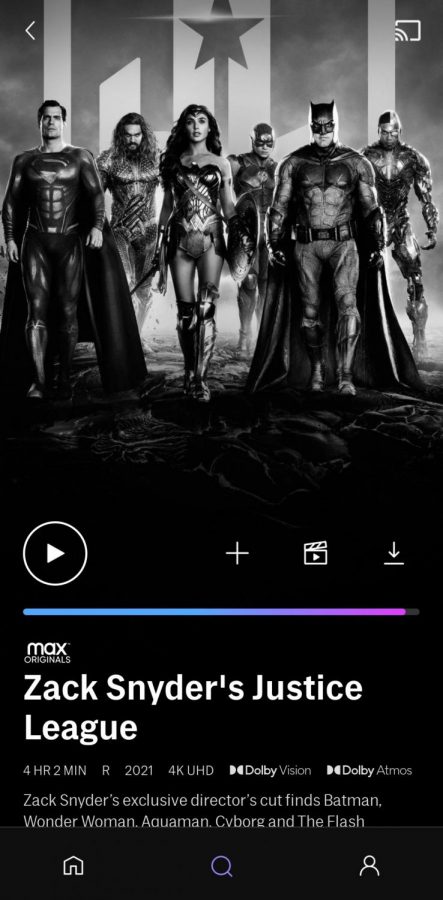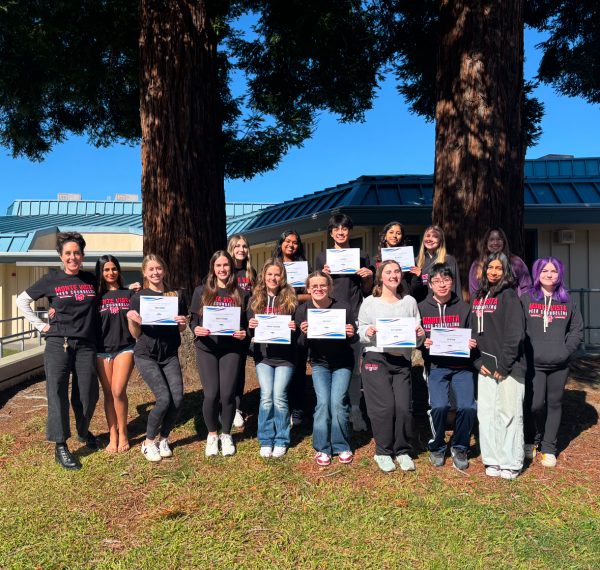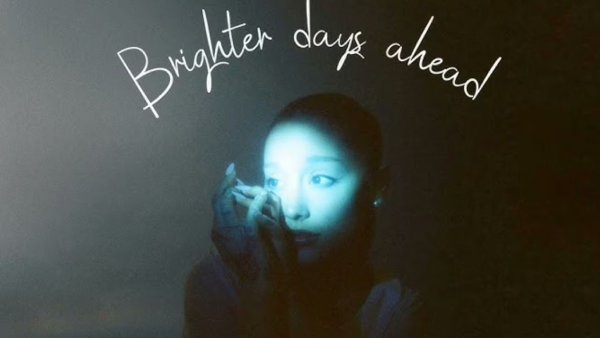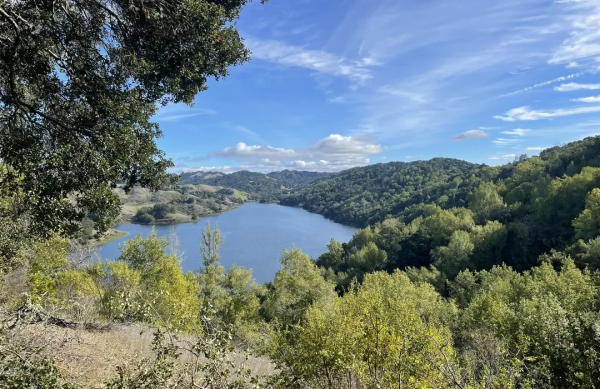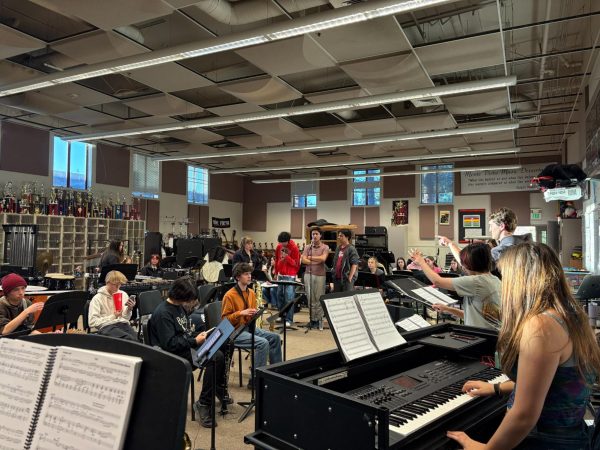Bringing Justice to the DCEU
View of “Zack Snyder’s Justice League” on the HBO Max mobile app. Due to the movie’s abundance of violent scenes and darker themes, Snyder’s cut was rated R while the theatrical was only PG-13.
WARNING: includes spoilers for “Justice League” and “Zack Snyder’s Justice League”
After Warner Brothers released the film “Justice League,” fans of the DC Extended Universe (DCEU, where all of Warner Brothers’ live-action DC films exist) “broke the internet” with their online campaign asking Warner Brothers to #ReleasetheSnyderCut, a then-mythological cut of the film over which director Zack Snyder had full control. Four years later, the fan-dubbed “Snyder cut” was released March 18, 2021 on HBO Max.
In 2017, the Warner Brothers released “Justice League” led by “Man of Steel” director Zack Snyder. Only, it wasn’t actually Snyder’s work; it was “The Avengers” and “Buffy the Vampire Slayer” director Joss Whedon’s. Snyder, who had already been clashing with the studio over the details of the production, left the project after his daughter Autumn passed away. Warner Brothers had Whedon take up the project from where Snyder had left it, resulting in several changes to the film that would ultimately lead it to its critical and box-office demise. The theatrical cut (Whedon’s interpretation of the film) officially stands as a part of the DCEU canon, but fans are fully prepared to accept Snyder’s version of this universe, or “SnyderVerse,” as the reality.
In comparing the two movies, the first thing you would’ve noticed was the significant difference in length. Whedon’s “Justice League” was only two hours long, adhering to the studio’s wishes. Meanwhile, Snyder’s film was four hours long because he didn’t believe he could fit all of his character introductions into the Warner Brothers-requested two hours.
“How am I supposed to introduce six characters and an alien with potential for world domination in two hours?” Snyder asked in a Vanity Fair interview. “I mean, I can do it, it can be done. Clearly it was done. But I didn’t see it.” (Snyder never saw the movie because his wife and producer of the project, Deborah Snyder, and executive producer Christopher Nolan advised him to stay away from it. This alone was a testament to how poorly-executed the theatrical release was.)
Snyder’s cut ended up being a $370 million production, one of the most expensive films ever created. Warner Brothers reportedly gave the original production $300 million, adding another $70 million later for finishing touches on computer-generated imaging (CGI) and a few reshoots. A major chunk of these funds went into the redesigning of Steppenwolf, the film’s antagonist. The original model looked similar to the version found in Snyder’s cut, but his more menacing appearance wasn’t what the studio wanted, according to producer Deborah Snyder.
The theatrical cut’s Steppenwolf was more of a raisin-human hybrid than an all-conquering alien—like a slightly shorter, non-purple Thanos with horns. With the help of the alien technology known as the Mother Boxes (what Ray Fisher’s Cyborg called “change machines” in Snyder’s film), Whedon’s Steppenwolf was a world-destroyer who came to conquer Earth and turn it into a replica of his fiery homeworld Apokolips.
In contrast, Snyder’s Steppenwolf appeared much less humanoid. The alien’s armor itself was a drastic change. He was covered in an endless amount of shiny silver spikes that didn’t just rest on his body—rather, they glided and adjusted with his breaths, his movements, and his thoughts. This Steppenwolf had no desire to turn Earth into his own world; he was a desperate, exiled servant eager to win his master Darkseid’s good graces by giving him what he desired most: the anti-life equation, which would have been important in following movies. This short introduction to Darkseid (Steppenwolf’s boss and Snyder’s ultimate DCEU villain) also gave the audience a peek into the vast universe that would have been built off of the movie had Snyder gotten his way four years ago.
One of the main things to note was that Whedon’s script changed a lot from Snyder’s original, not only to cut down the time, but to also fit the lighter tone of the Justice League that the studio envisioned. According to Snyder, Whedon stepped in because one of the Warner Brothers executives working with him thought he could rewrite the script to be what the studio wanted. Whedon reportedly reshot three-quarters of the film in order to fit this new vision, with there only being a couple scenes the two films shared. A majority of the heroes’ backstories were removed entirely, eliminating both the importance and potential for character development from Victor Stone/Cyborg (Fisher) and Barry Allen/the Flash (Ezra Miller), the latter of whom ended up acting less like a 20-something forensics geek and more like Marvel’s 16-year-old Peter Parker. Whedon didn’t create a formidable Justice League, he assembled the Walmart-grade Avengers.
Whedon’s depiction of the women in the movie was also an issue, one that worsened in the eyes of the public when his sexist and on-set abuse controversies surfaced in recent years. Diana Prince/Wonder Woman (played by Gal Gadot in the DCEU), a long-standing DC character and one of the most popular female superheroes, is an Amazon, a female warrior of Greek myth who could outmatch men in strength and will. In the comics as well as other official DC releases, Diana was always a fierce leader. Whedon made her a mother figure and the League’s nagging caretaker, The Mary Sue’s Rachel Leishman said.
Moreover, because the theatrical release was only two hours long, Whedon made the decision to cut out a majority of the Amazons’ battle with Steppenwolf for the Mother Box and diminish their warrior-like qualities. It was too short to be a battle—more a futile resistance that, Leishman claimed, failed to establish the Amazons as “bada**.” Snyder, on the other hand, built up to the battle and gave the women enough screen time to show their warrior spirit and determination. Even though Steppenwolf still won in the end, Leishman felt that this move showed both the strength of the alien and the Amazons, as well as the women’s willingness to sacrifice themselves for the greater good.
Not to say Snyder’s version of the story was perfect. The biggest complaint was that the movie was four hours long and essentially the same movie plot-wise. Comedian Leslie Jones live-Tweeted her reactions to the film with #longa**movie. Entertainment Weekly’s Darren Franich even titled his unflattering movie review “‘Zack Snyder’s Justice League’ is just as bad and twice as long.” The film used its first two hours to introduce an entire cast of new characters that the audience had never seen before, including a warrior alien that was cast away from his homeland for a reason that Snyder still had no time to explain during the film.
“Everything takes forever to go nowhere,” Franich said.
Nevertheless, fans loved Snyder’s take much more than Whedon’s. Snyder’s following have flocked to social media to convey their joy with the new movie, with fans releasing memefied compilations of scenes from the theatrical release to poke fun at what they see as a disaster, this so-called “Josstice League,” while praising Snyder’s initial vision.
YouTube user @SirTerranceYT claimed that Whedon’s added jokes made no sense in the context of the movie. Others, such as @Giang Quang Vinh, agreed.
“God damnit, [I] was at least trying not to judge Joss Whedon on this movie, but this line is just unforgivable,” Vinh said in regards to Whedon’s decision to voice-over a conversation between Lois Lane (Amy Adams) and Superman (Henry Cavill) in which Lane said “you smell good” instead of “you spoke.”
“Why… did Whedon change this line?!” @The Lockenbubi asked. “As I was watching [Zack Snyder’s ‘Justice League’]… I was shocked by the fact that Joss actually came in and changed this exchange with a voice-over.”
Fans preferred Snyder’s version so much that they have begun the campaign to #RestoretheSnyderVerse (make Snyder’s vision for the DCEU the official version), one they hope will succeed like the #ReleasetheSnyderCut campaign back in 2017.
“As fans that’s all we can do,” Twitter user @pud333 said, “[a]sk for what we want. The business realities show a huge uphill climb. But funny enough, to #RestoretheSnyderVerse, that mountain is smaller than #ReleasetheSnyderCut so there’s that. And that ended up happening so… Just stay passionate.”
Despite critics’ negative reviews and the studio’s repeated denial of the SnyderVerse’s reinstatement, it has become apparent that Snyder’s film and vision have brought justice back to the DCEU.

Claire Sohn is a junior at Monte Vista High School. She is currently a Staff Writer in her first year...


